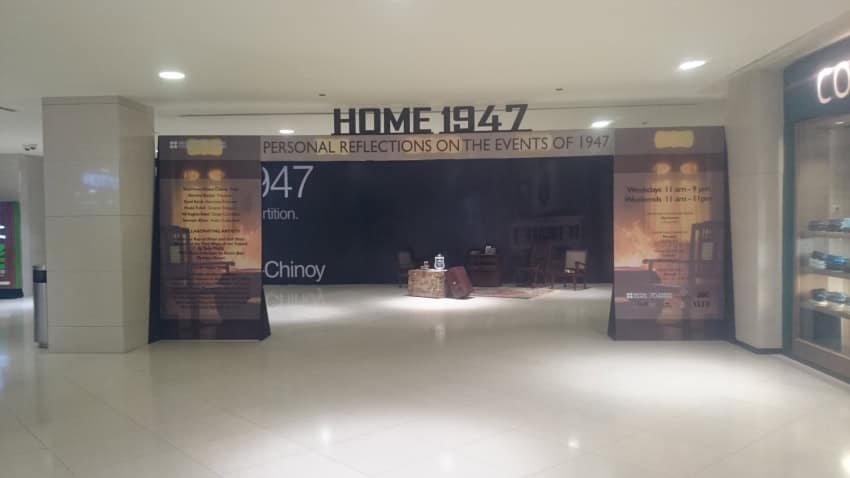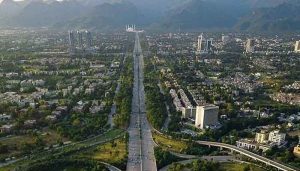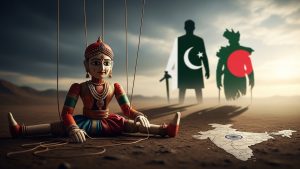With close to 15 million people being uprooted and 1-2 million dead, the migration between the newly independent states of India and Pakistan in 1947 was one of the largest and bloodiest that history has ever seen. History books tend to focus on the politics behind the division of the subcontinent, talking about the dead in general terms, glossing over the “personal” stories: who lost a sibling or a parent? Under what circumstances? Who had friends who turned against them?
Third-generation-immigrants to Pakistan like myself only know the personal tales of Partition through the stories we heard from our grandparents. However, with most of that generation having passed on, or, like my sole surviving grandparent, becoming victims to failing memories, these stories are slowly being lost to us.
Sharmeen Obaid-Chinoy’s ground-breaking project, “Home 1947: Personal Reflections on Partition”, seeks to bring some of these tales to life, using a combination of short documentaries, installations, a pop-up museum, and virtual reality and sound installations to re-create, according to a vinyl banner pasted on one of the walls of the mall leading to the exhibition, “the long-lost sights, sounds and smells of what millions once called home.”
After premiering at the Manchester International Festival 2017, followed by a three-day run in Lahore during October 2017, the exhibit is now on display on the second floor of Dolmen Mall, Clifton, Karachi till January 15, 2018.

Immediately upon entering the exhibition, one is met with a reconstruction of a 1940s drawing room.
An old suitcase propped up against a crate, a worn carpet, three arm-chairs, and a battered chest of drawers with some old photographs and other odds and ends gives an indication of what is to follow: an attempt to portray what must have been going through people’s minds when they left behind – when they were forced to leave behind – the homes they had worked so hard and so lovingly to build. For me, a voluntary move from my native Karachi to Lahore for employment, with the option of returning home always open to me, was heart-wrenching enough.
What would someone be going through if they were unwillingly leaving home with the knowledge that they may never return, that they may never see the streets in which they grew up again? Did they leave voluntarily? Were they compelled to flee? Did the thought of going away, never to return, overwhelm them to the extent that they broke down on one of these chairs? Unfortunately, inanimate objects tell no stories, and one can only wonder.

These thoughts haunt you as you walk past the drawing room through a black curtain that leads into the first of the four main segments of Home 1947.
The first segment, titled “In the words of Survivors”, leads to a darkened room. As you enter, volunteers hand out cushioned headphones, inviting you to listen to seven three-minute-long videos playing in a loop on a projection screen, each corresponding to one personal narrative. In one of them, an old man reminisces about his father’s grave that he left behind in India. In another, a woman recalls her best friend whose family chose to stay behind in India.

Another woman painfully remembers how her father ordered her brother to kill them all and subsequently commit suicide if the train in which they had managed to escape were attacked. In the most heartbreaking story of them all, we learn about a mother who was slashed to death before her son’s eyes.
The second segment , “Safarnama”, takes you through a darkened corridor, the lights triggered by motion sensors that are activated as you walk through, in an attempt to symbolize the “unfamiliar paths taken by the millions of refugees seeking a new life for themselves and their loved ones”.

As I walked down the corridor, I found myself thinking: how many of these immigrants would have made the journey if they knew they would not make it to the other side? Before I could give the matter much thought, though, the corridor came to an end.
The third segment, “Orphans of Time”, is a projection room showcasing images of the interiors of abandoned homes during the 1940s. Here, too, a volunteer offers you a headphone, to enable you to listen to a piece of music that had been composed to supplement the visuals being played on the projection screen. While the music was melancholy enough, it may have had more impact had it not been playing through the headphone.

The final segment, “The Other Side of Silence”, is an attempt to relive the memories of Partition through a combination of what the sign at the entrance described as “oral histories”, focused photographs and other memorabilia, and a virtual reality experience. This in turn is divided into several sub-sections.
The first of these is “Suitcases of Memories”, a title that strikes you as rather odd – until you step in and realize why. As the immigrants fled to their new homes, they left most of their belongings behind. What they did take with them, however, were certain items they could not, for a variety of reasons, bear to part with. “Suitcases of Memories” consists of three suitcases suspended from the ceiling, each opened to reveal a collection of seemingly insignificant items, each of which most likely has its own story behind it.

One suitcase contains several cologne bottles and a shoe brush, another features a small jewellery box, a hair brush, and a pocket mirror. While these items seem random, they do strike a chord somewhere within all of us: don’t we all want to hold on to something that triggers memories in us?
From here you are led to the “Anver Jehan Ansari wall”, a collection of photographs of various phases in the life of one woman, Ms. Ansari, from her birth in Calcutta, India, to her current home in Lahore, Pakistan. In one photograph, dated 1948, Anver grins as she poses for her husband who she had married not long before. In another, she is shown spending time with her family in her new home in Lahore Cantt three years later. The final photograph, dated 2017, is one of an 86-year-old Anver.

We are finally led to “A People’s History”, a collection of oral histories that, according to the sign outside, “are a reminder that 1947 should not remain a footnote of history, but an experience that leaves behind a constructive legacy”. Plastic holders line the wall, each with a laminated page containing a first-person account of one individual’s thoughts and fears as he or she witnessed the horror that was Partition.
Picking up the headphone on a peg next to each holder, you realize that some of these are transcripts, and some translations, of voice recordings, each speaker turning out to be the one mentioned on the accompanying page.

The ups and downs in the tone of voice go a long way in indicating that the wounds of the carnage that took place 70 years ago are still fresh. However, barring one of them, the recordings failed to give the impression of being anything more than personal recollections, with little to distinguish them from the videos I had seen when I first entered the exhibition, except the medium itself.
I hoped to take one of the laminated pages home with me, but, unsure of whether or not I would be allowed to do so, and with no one around to ask, I decided to leave it behind.
Of note is the section where a volunteer presents each visitor with a pair of cardboard virtual reality glasses offering a peek into the painstakingly re-created foyer of a vacant 1940s haveli, right down to the cracks in the plaster of the ceiling. Was this imagery based on a real haveli? If so, where did the source material on which this virtual reality recreation was based come from? The volunteer was unable to enlighten me.

On the way out, a board hung up to your left asks: What would you take if you had to leave your home in 1947? Visitors to the exhibit left their answers on bright and colourful Post-It notes that were subsequently tacked on to the board. Intrigued, I tried to read a few, but a combination of poor lighting and bad eyesight prevented me from satisfying my curiosity.

As I prepared to leave the exhibition and go back to the mall, I could not help feeling a bit unfulfilled, due in large part to the fact that I was expecting more personal accounts than were on offer. It did not take me long to realize, however, that the generation that went through Partition is dwindling, and will soon no longer be around. If it were not for attempts like Home 1947, the sense of the sacrifices that generation made to make Pakistan a reality will die with them.














